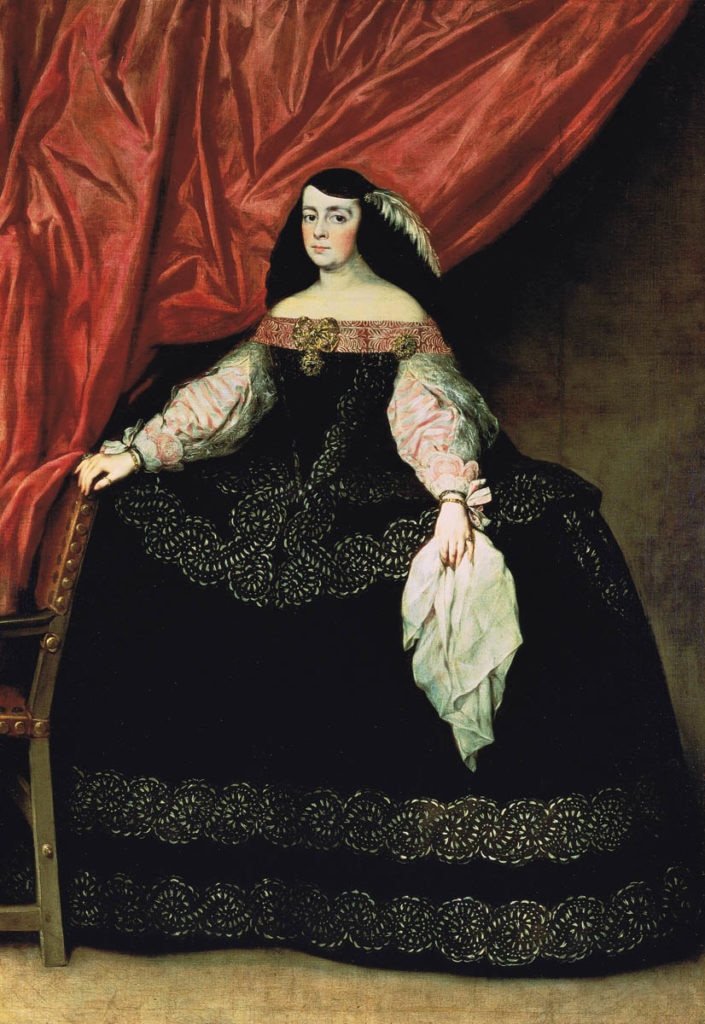Anyway, this project was long in the making. Back in 2019, when my husband and I planned a LARP set in 17th century Spain for 2020 (not knowing that the pandemic would f*ck up our plans), I knew I would need a new gown. Yes, yes, I know the title says "c. 1580s". I really don't like the look of 17th century Spanish fashion with the ridiculously large verdugados that don't fit though any doors.
A verdugado worn beneath the noblewoman's skirt, similar to a farthingale.
Therefore, I decided that I would rather go back to the Renaissance and make myself a late 16th century gown, when Spanish influence in fashion was at its height. Somehow I longed for such a gown for a while anyway, so why not?
It took some time until I finally decided on fabric, colour, embellishments, etc. that I moved onto the pattern. I used a combination of Margo Anderson's ladies' doublet pattern, a gown once worn by the Pfalzgräfin Dorothea found in Patterns of Fashion 3 and a fairly old (and unfortunately out of print) pattern by Simplicity. I can't say how long it took me to make it, because it was a process with a lot of breaks. I started in summer 2020 and finished it in summer 2021. Of course it didn't take me an entire year to make it, but after our LARP got postponed and several other setbacks in life, I couldn't be arsed to continue for a loooong time.
Anyhow, it is finally finished and I was able to wear it, alas the photographer for the event cancelled so I barely have any pictures of the gown's magnificence. I will definitely plan a photoshoot with it, but not anytime soon as Austria is in lockdown (yet again) and I have prioritised finishing my degree. So here are some awful pictures from my iPhone and one from the event.














Social Icons